Neoplastic cells Stock Photos and Images
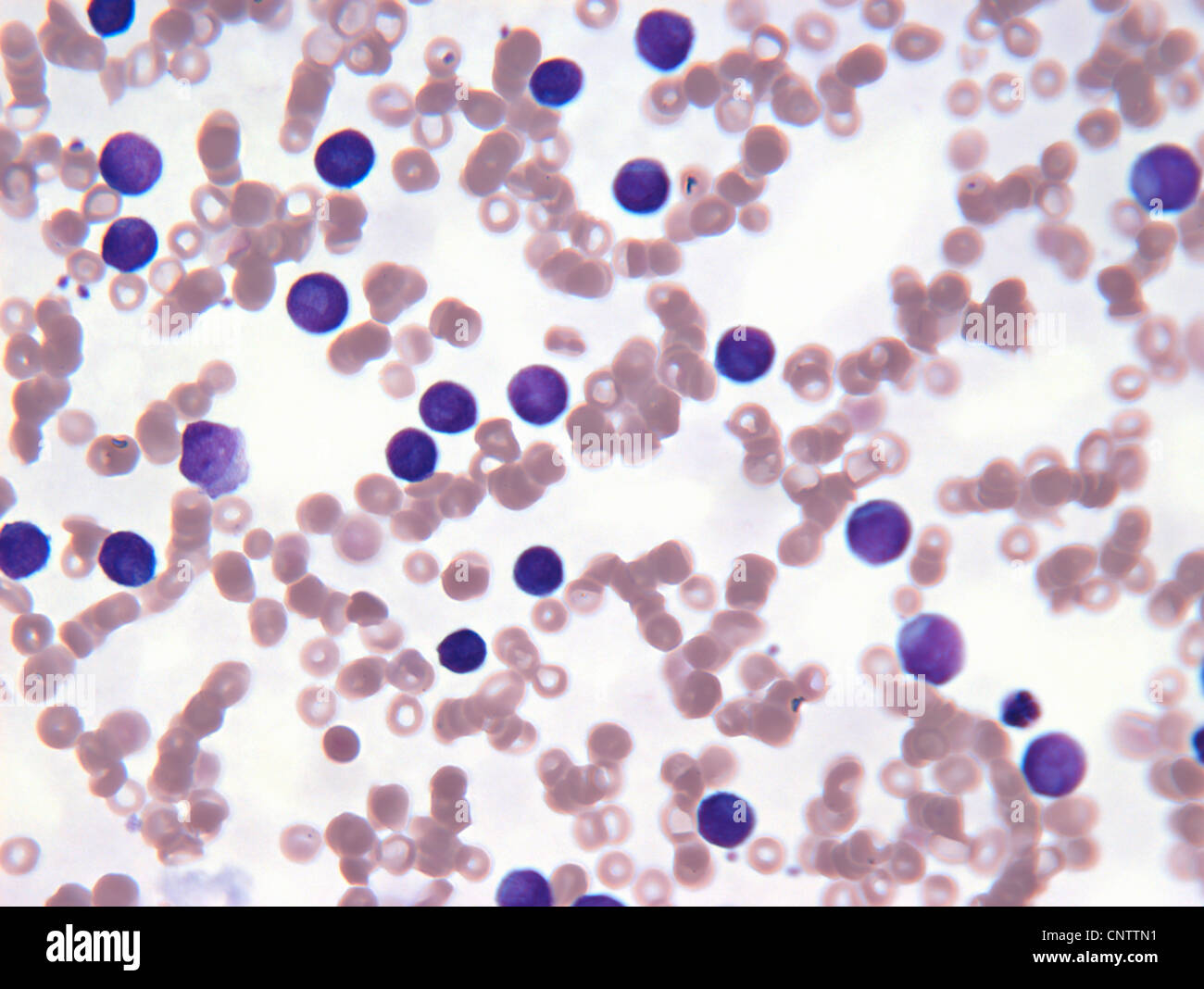 Neoplastic lymphocyte cells in blood Stock Photohttps://www.alamy.com/image-license-details/?v=1https://www.alamy.com/stock-photo-neoplastic-lymphocyte-cells-in-blood-47874765.html
Neoplastic lymphocyte cells in blood Stock Photohttps://www.alamy.com/image-license-details/?v=1https://www.alamy.com/stock-photo-neoplastic-lymphocyte-cells-in-blood-47874765.htmlRFCNTTN1–Neoplastic lymphocyte cells in blood
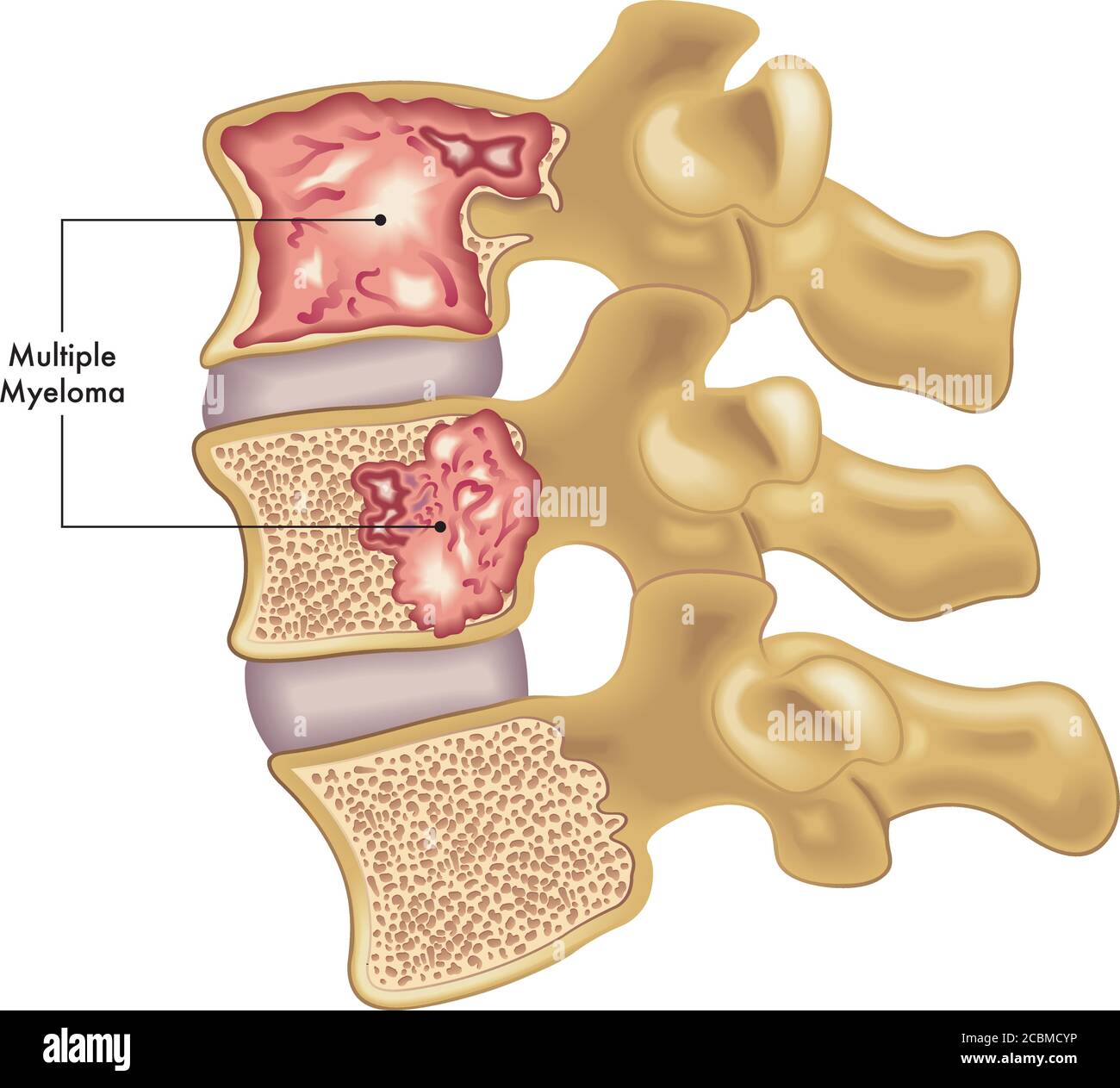 Medical illustration of two vertebrae of the spine affected by multiple myeloma. Stock Vectorhttps://www.alamy.com/image-license-details/?v=1https://www.alamy.com/medical-illustration-of-two-vertebrae-of-the-spine-affected-by-multiple-myeloma-image368628170.html
Medical illustration of two vertebrae of the spine affected by multiple myeloma. Stock Vectorhttps://www.alamy.com/image-license-details/?v=1https://www.alamy.com/medical-illustration-of-two-vertebrae-of-the-spine-affected-by-multiple-myeloma-image368628170.htmlRF2CBMCYP–Medical illustration of two vertebrae of the spine affected by multiple myeloma.
 Leaves, Sudden Oak Death (SOD) is a disease of Live & Tan Oak trees 'Quercus vislizenii'. Stock Photohttps://www.alamy.com/image-license-details/?v=1https://www.alamy.com/leaves-sudden-oak-death-sod-is-a-disease-of-live-tan-oak-trees-quercus-vislizenii-image414019255.html
Leaves, Sudden Oak Death (SOD) is a disease of Live & Tan Oak trees 'Quercus vislizenii'. Stock Photohttps://www.alamy.com/image-license-details/?v=1https://www.alamy.com/leaves-sudden-oak-death-sod-is-a-disease-of-live-tan-oak-trees-quercus-vislizenii-image414019255.htmlRM2F1G5NY–Leaves, Sudden Oak Death (SOD) is a disease of Live & Tan Oak trees 'Quercus vislizenii'.
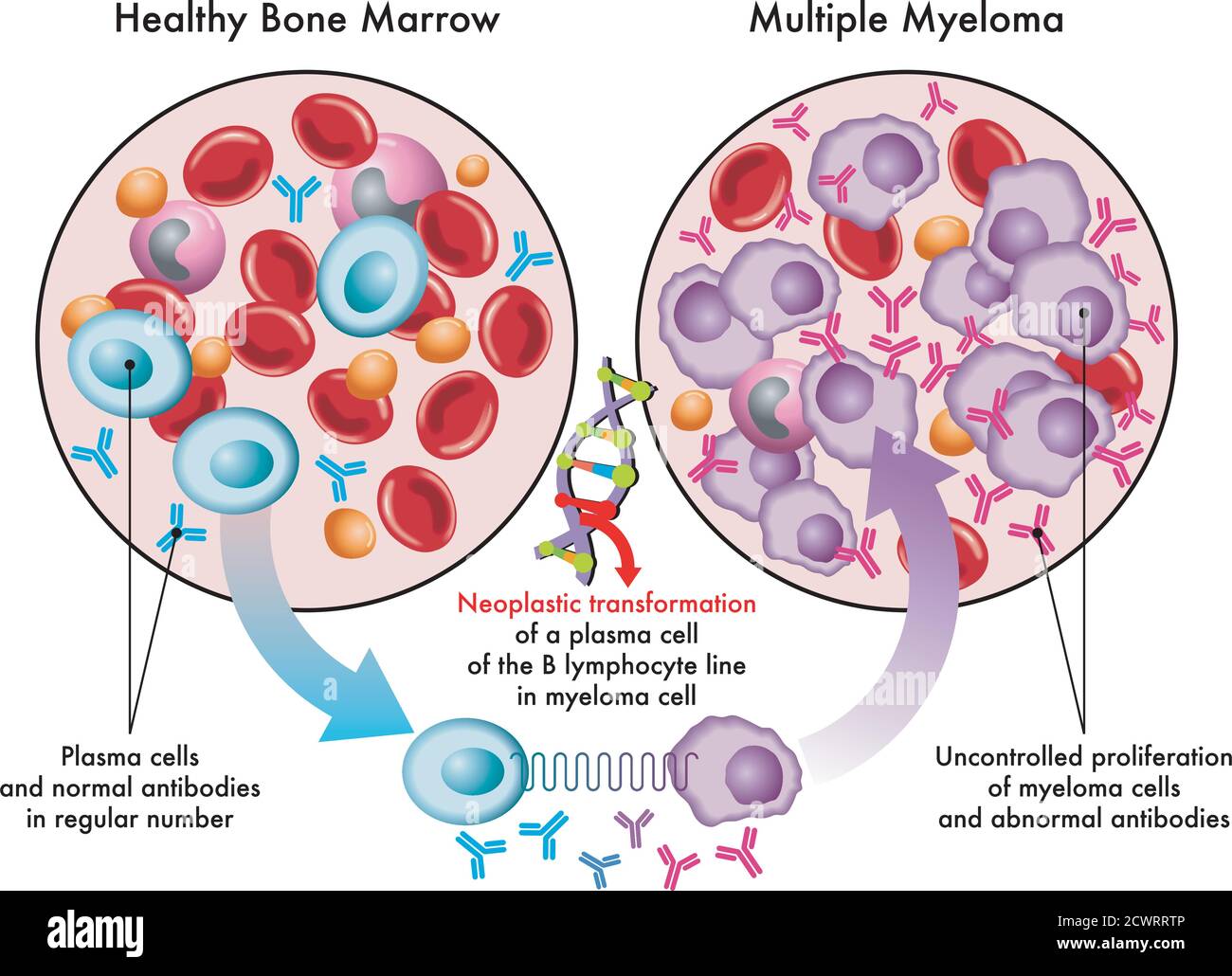 Medical illustration shows the transformation of plasma cells in healthy bone marrow into myeloma cells in multiple myeloma, due to DNA damage. Stock Vectorhttps://www.alamy.com/image-license-details/?v=1https://www.alamy.com/medical-illustration-shows-the-transformation-of-plasma-cells-in-healthy-bone-marrow-into-myeloma-cells-in-multiple-myeloma-due-to-dna-damage-image377307750.html
Medical illustration shows the transformation of plasma cells in healthy bone marrow into myeloma cells in multiple myeloma, due to DNA damage. Stock Vectorhttps://www.alamy.com/image-license-details/?v=1https://www.alamy.com/medical-illustration-shows-the-transformation-of-plasma-cells-in-healthy-bone-marrow-into-myeloma-cells-in-multiple-myeloma-due-to-dna-damage-image377307750.htmlRF2CWRRTP–Medical illustration shows the transformation of plasma cells in healthy bone marrow into myeloma cells in multiple myeloma, due to DNA damage.
 Sudden Oak Death (SOD) is a disease of Live & Tan Oak 'Quercus vislizenii' trees caused by an invasive plant pathogen 'Phytophthora ramorum'. Stock Photohttps://www.alamy.com/image-license-details/?v=1https://www.alamy.com/sudden-oak-death-sod-is-a-disease-of-live-tan-oak-quercus-vislizenii-trees-caused-by-an-invasive-plant-pathogen-phytophthora-ramorum-image367491090.html
Sudden Oak Death (SOD) is a disease of Live & Tan Oak 'Quercus vislizenii' trees caused by an invasive plant pathogen 'Phytophthora ramorum'. Stock Photohttps://www.alamy.com/image-license-details/?v=1https://www.alamy.com/sudden-oak-death-sod-is-a-disease-of-live-tan-oak-quercus-vislizenii-trees-caused-by-an-invasive-plant-pathogen-phytophthora-ramorum-image367491090.htmlRM2C9TJHP–Sudden Oak Death (SOD) is a disease of Live & Tan Oak 'Quercus vislizenii' trees caused by an invasive plant pathogen 'Phytophthora ramorum'.
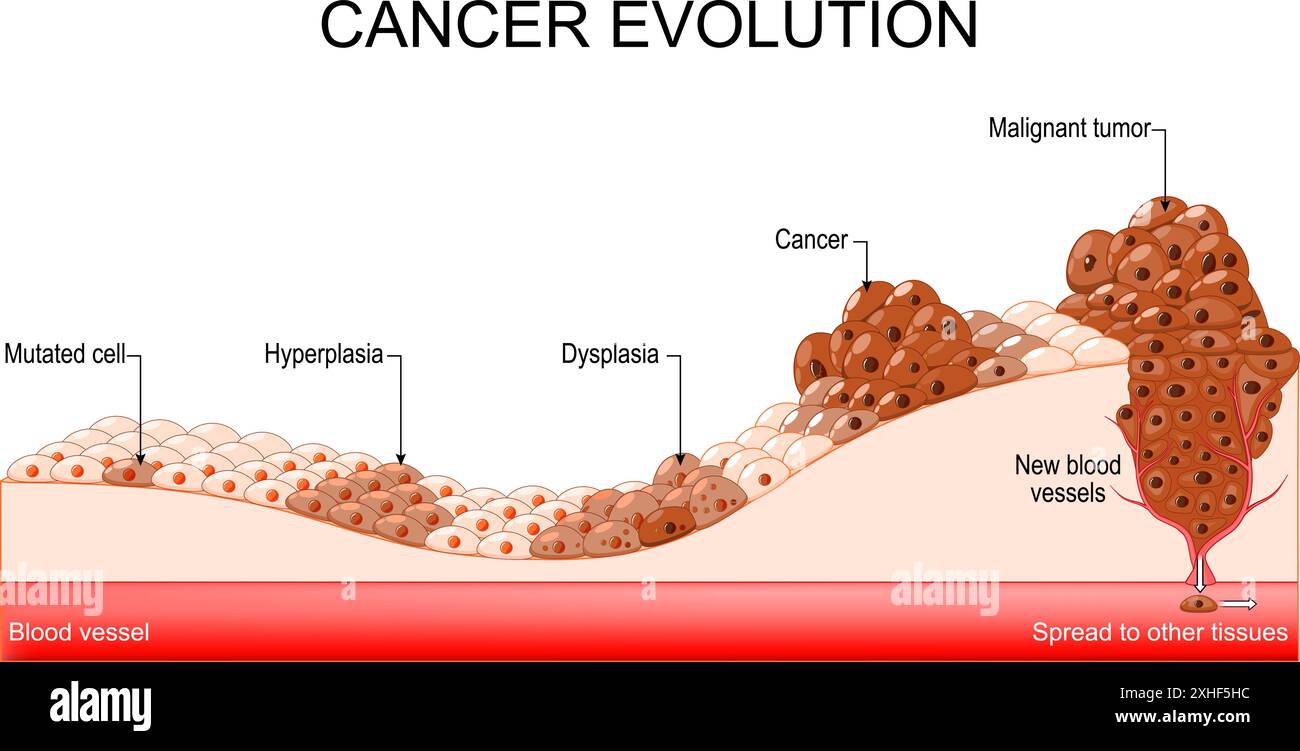 Cancer evolution from Mutated cell and Hyperplasia, to Dysplasia and Malignant tumor. Spread cancer cells to other tissues. Vector diagram Stock Vectorhttps://www.alamy.com/image-license-details/?v=1https://www.alamy.com/cancer-evolution-from-mutated-cell-and-hyperplasia-to-dysplasia-and-malignant-tumor-spread-cancer-cells-to-other-tissues-vector-diagram-image613145720.html
Cancer evolution from Mutated cell and Hyperplasia, to Dysplasia and Malignant tumor. Spread cancer cells to other tissues. Vector diagram Stock Vectorhttps://www.alamy.com/image-license-details/?v=1https://www.alamy.com/cancer-evolution-from-mutated-cell-and-hyperplasia-to-dysplasia-and-malignant-tumor-spread-cancer-cells-to-other-tissues-vector-diagram-image613145720.htmlRF2XHF5HC–Cancer evolution from Mutated cell and Hyperplasia, to Dysplasia and Malignant tumor. Spread cancer cells to other tissues. Vector diagram
 Antique Medical Illustration of Tumors of Bone circa 1881 Stock Photohttps://www.alamy.com/image-license-details/?v=1https://www.alamy.com/stock-photo-antique-medical-illustration-of-tumors-of-bone-circa-1881-37155970.html
Antique Medical Illustration of Tumors of Bone circa 1881 Stock Photohttps://www.alamy.com/image-license-details/?v=1https://www.alamy.com/stock-photo-antique-medical-illustration-of-tumors-of-bone-circa-1881-37155970.htmlRFC4CGPX–Antique Medical Illustration of Tumors of Bone circa 1881
 Leukaemia white blood cells, coloured scanningelectron micrograph (SEM) Stock Photohttps://www.alamy.com/image-license-details/?v=1https://www.alamy.com/stock-photo-leukaemia-white-blood-cells-coloured-scanningelectron-micrograph-sem-21201586.html
Leukaemia white blood cells, coloured scanningelectron micrograph (SEM) Stock Photohttps://www.alamy.com/image-license-details/?v=1https://www.alamy.com/stock-photo-leukaemia-white-blood-cells-coloured-scanningelectron-micrograph-sem-21201586.htmlRFB6DPRE–Leukaemia white blood cells, coloured scanningelectron micrograph (SEM)
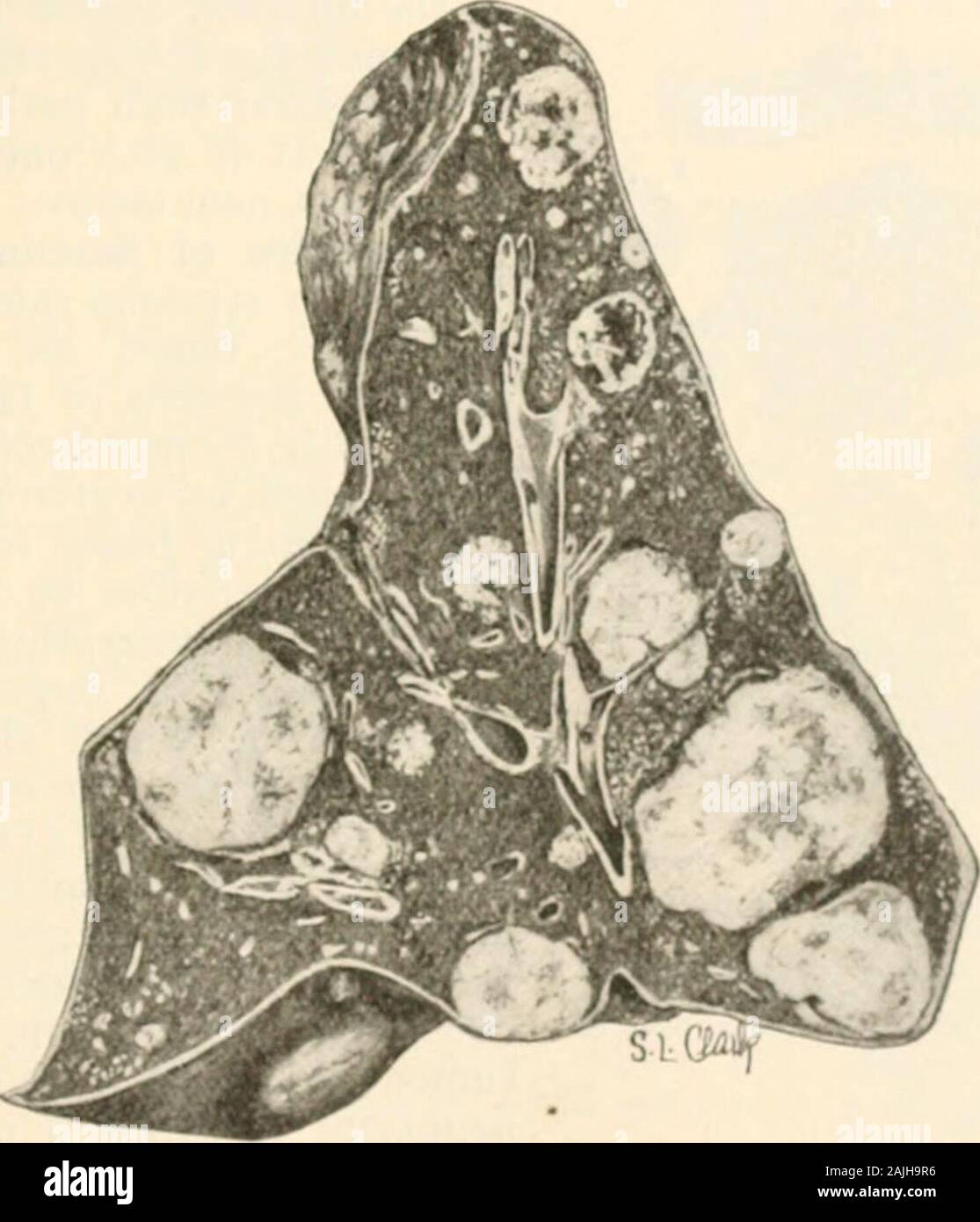 Manual of pathology : including bacteriology, the technic of postmortems, and methods of pathologic research . Soc. de Biol., 1904, Ivi, p. 153. See technic of Blood Examination, Part III, Chapter I. TTMokS. 351 equivalent to saying that the nion- tluid the intercellular sul>stance,the more malignant the tumor. Fluidity of the intercellular substanceimplies that the neoplastic cells are loosely bound together; this lackof cohesion between the elements of the tumor permits of the readydislodgement of one or more cells, or masses of cells, and hence favorsdisplacement of the tumor elements in Stock Photohttps://www.alamy.com/image-license-details/?v=1https://www.alamy.com/manual-of-pathology-including-bacteriology-the-technic-of-postmortems-and-methods-of-pathologic-research-soc-de-biol-1904-ivi-p-153-see-technic-of-blood-examination-part-iii-chapter-i-ttmoks-351-equivalent-to-saying-that-the-nion-tluid-the-intercellular-sulgtstancethe-more-malignant-the-tumor-fluidity-of-the-intercellular-substanceimplies-that-the-neoplastic-cells-are-loosely-bound-together-this-lackof-cohesion-between-the-elements-of-the-tumor-permits-of-the-readydislodgement-of-one-or-more-cells-or-masses-of-cells-and-hence-favorsdisplacement-of-the-tumor-elements-in-image338441690.html
Manual of pathology : including bacteriology, the technic of postmortems, and methods of pathologic research . Soc. de Biol., 1904, Ivi, p. 153. See technic of Blood Examination, Part III, Chapter I. TTMokS. 351 equivalent to saying that the nion- tluid the intercellular sul>stance,the more malignant the tumor. Fluidity of the intercellular substanceimplies that the neoplastic cells are loosely bound together; this lackof cohesion between the elements of the tumor permits of the readydislodgement of one or more cells, or masses of cells, and hence favorsdisplacement of the tumor elements in Stock Photohttps://www.alamy.com/image-license-details/?v=1https://www.alamy.com/manual-of-pathology-including-bacteriology-the-technic-of-postmortems-and-methods-of-pathologic-research-soc-de-biol-1904-ivi-p-153-see-technic-of-blood-examination-part-iii-chapter-i-ttmoks-351-equivalent-to-saying-that-the-nion-tluid-the-intercellular-sulgtstancethe-more-malignant-the-tumor-fluidity-of-the-intercellular-substanceimplies-that-the-neoplastic-cells-are-loosely-bound-together-this-lackof-cohesion-between-the-elements-of-the-tumor-permits-of-the-readydislodgement-of-one-or-more-cells-or-masses-of-cells-and-hence-favorsdisplacement-of-the-tumor-elements-in-image338441690.htmlRM2AJH9R6–Manual of pathology : including bacteriology, the technic of postmortems, and methods of pathologic research . Soc. de Biol., 1904, Ivi, p. 153. See technic of Blood Examination, Part III, Chapter I. TTMokS. 351 equivalent to saying that the nion- tluid the intercellular sul>stance,the more malignant the tumor. Fluidity of the intercellular substanceimplies that the neoplastic cells are loosely bound together; this lackof cohesion between the elements of the tumor permits of the readydislodgement of one or more cells, or masses of cells, and hence favorsdisplacement of the tumor elements in
 Alveolar rhabdomyosarcoma in the right axilla of a 20 year old from Khartoum, Sudan. Cells that differentiate into muscle cells are kown as rhabdo Stock Photohttps://www.alamy.com/image-license-details/?v=1https://www.alamy.com/alveolar-rhabdomyosarcoma-in-the-right-axilla-of-a-20-year-old-from-khartoum-sudan-cells-that-differentiate-into-muscle-cells-are-kown-as-rhabdo-image353680814.html
Alveolar rhabdomyosarcoma in the right axilla of a 20 year old from Khartoum, Sudan. Cells that differentiate into muscle cells are kown as rhabdo Stock Photohttps://www.alamy.com/image-license-details/?v=1https://www.alamy.com/alveolar-rhabdomyosarcoma-in-the-right-axilla-of-a-20-year-old-from-khartoum-sudan-cells-that-differentiate-into-muscle-cells-are-kown-as-rhabdo-image353680814.htmlRM2BFBFDJ–Alveolar rhabdomyosarcoma in the right axilla of a 20 year old from Khartoum, Sudan. Cells that differentiate into muscle cells are kown as rhabdo
 Alveolar rhabdomyosarcoma in the right axilla of a 20 year old from Khartoum, Sudan. Cells that differentiate into muscle cells are kown as rhabdomyob Stock Photohttps://www.alamy.com/image-license-details/?v=1https://www.alamy.com/alveolar-rhabdomyosarcoma-in-the-right-axilla-of-a-20-year-old-from-khartoum-sudan-cells-that-differentiate-into-muscle-cells-are-kown-as-rhabdomyob-image463419964.html
Alveolar rhabdomyosarcoma in the right axilla of a 20 year old from Khartoum, Sudan. Cells that differentiate into muscle cells are kown as rhabdomyob Stock Photohttps://www.alamy.com/image-license-details/?v=1https://www.alamy.com/alveolar-rhabdomyosarcoma-in-the-right-axilla-of-a-20-year-old-from-khartoum-sudan-cells-that-differentiate-into-muscle-cells-are-kown-as-rhabdomyob-image463419964.htmlRM2HWXGW0–Alveolar rhabdomyosarcoma in the right axilla of a 20 year old from Khartoum, Sudan. Cells that differentiate into muscle cells are kown as rhabdomyob
 Sudden Oak Death (SOD) is a disease of Live & Tan Oak 'Quercus vislizenii' trees caused by an invasive plant pathogen 'Phytophthora ramorum'. Stock Photohttps://www.alamy.com/image-license-details/?v=1https://www.alamy.com/sudden-oak-death-sod-is-a-disease-of-live-tan-oak-quercus-vislizenii-trees-caused-by-an-invasive-plant-pathogen-phytophthora-ramorum-image367491078.html
Sudden Oak Death (SOD) is a disease of Live & Tan Oak 'Quercus vislizenii' trees caused by an invasive plant pathogen 'Phytophthora ramorum'. Stock Photohttps://www.alamy.com/image-license-details/?v=1https://www.alamy.com/sudden-oak-death-sod-is-a-disease-of-live-tan-oak-quercus-vislizenii-trees-caused-by-an-invasive-plant-pathogen-phytophthora-ramorum-image367491078.htmlRM2C9TJHA–Sudden Oak Death (SOD) is a disease of Live & Tan Oak 'Quercus vislizenii' trees caused by an invasive plant pathogen 'Phytophthora ramorum'.
 Antique Medical Illustration of Tumors of Bone circa 1881 Stock Photohttps://www.alamy.com/image-license-details/?v=1https://www.alamy.com/stock-photo-antique-medical-illustration-of-tumors-of-bone-circa-1881-37155990.html
Antique Medical Illustration of Tumors of Bone circa 1881 Stock Photohttps://www.alamy.com/image-license-details/?v=1https://www.alamy.com/stock-photo-antique-medical-illustration-of-tumors-of-bone-circa-1881-37155990.htmlRFC4CGRJ–Antique Medical Illustration of Tumors of Bone circa 1881
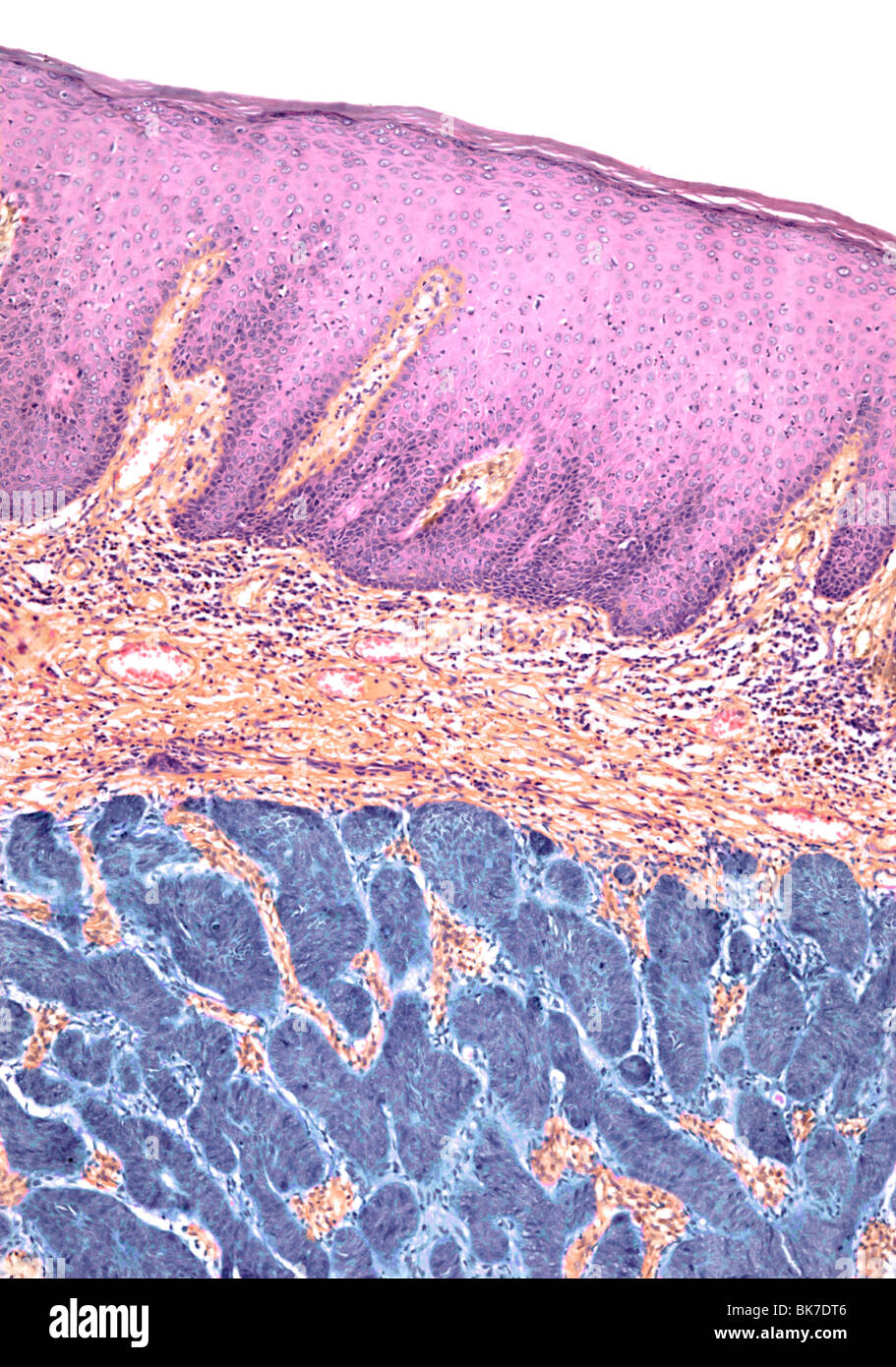 Skin cancer, light micrograph Stock Photohttps://www.alamy.com/image-license-details/?v=1https://www.alamy.com/stock-photo-skin-cancer-light-micrograph-29053366.html
Skin cancer, light micrograph Stock Photohttps://www.alamy.com/image-license-details/?v=1https://www.alamy.com/stock-photo-skin-cancer-light-micrograph-29053366.htmlRFBK7DT6–Skin cancer, light micrograph
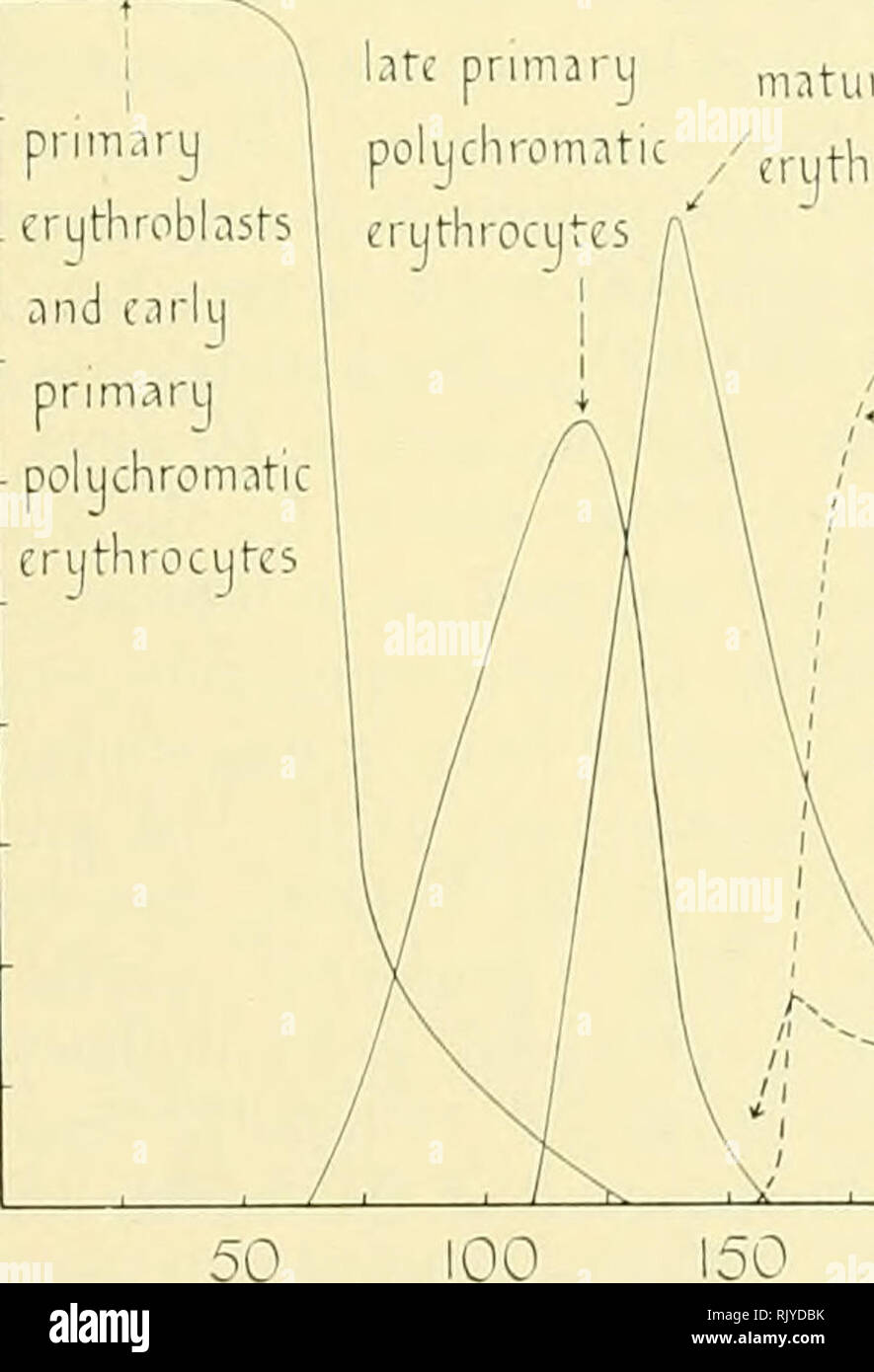 . Atlas of avian hematology. Veterinary hematology; Poultry -- Diseases. spicuous nucleoli of figure 251. It is generally believed that some change has taken place in the cell metabolism that prevents the normal process of differentiation. The great mass of data on the cytology and propagation of leukemic and other neoplastic cells amply substantiates the idea that an intracellular change can and does occur; but this does not exclude the presence in the plasma of a "differentiating" factor, and the sequence of events observed in embryonic blood before and after circulation is establi Stock Photohttps://www.alamy.com/image-license-details/?v=1https://www.alamy.com/atlas-of-avian-hematology-veterinary-hematology-poultry-diseases-spicuous-nucleoli-of-figure-251-it-is-generally-believed-that-some-change-has-taken-place-in-the-cell-metabolism-that-prevents-the-normal-process-of-differentiation-the-great-mass-of-data-on-the-cytology-and-propagation-of-leukemic-and-other-neoplastic-cells-amply-substantiates-the-idea-that-an-intracellular-change-can-and-does-occur-but-this-does-not-exclude-the-presence-in-the-plasma-of-a-quotdifferentiatingquot-factor-and-the-sequence-of-events-observed-in-embryonic-blood-before-and-after-circulation-is-establi-image235401815.html
. Atlas of avian hematology. Veterinary hematology; Poultry -- Diseases. spicuous nucleoli of figure 251. It is generally believed that some change has taken place in the cell metabolism that prevents the normal process of differentiation. The great mass of data on the cytology and propagation of leukemic and other neoplastic cells amply substantiates the idea that an intracellular change can and does occur; but this does not exclude the presence in the plasma of a "differentiating" factor, and the sequence of events observed in embryonic blood before and after circulation is establi Stock Photohttps://www.alamy.com/image-license-details/?v=1https://www.alamy.com/atlas-of-avian-hematology-veterinary-hematology-poultry-diseases-spicuous-nucleoli-of-figure-251-it-is-generally-believed-that-some-change-has-taken-place-in-the-cell-metabolism-that-prevents-the-normal-process-of-differentiation-the-great-mass-of-data-on-the-cytology-and-propagation-of-leukemic-and-other-neoplastic-cells-amply-substantiates-the-idea-that-an-intracellular-change-can-and-does-occur-but-this-does-not-exclude-the-presence-in-the-plasma-of-a-quotdifferentiatingquot-factor-and-the-sequence-of-events-observed-in-embryonic-blood-before-and-after-circulation-is-establi-image235401815.htmlRMRJYDBK–. Atlas of avian hematology. Veterinary hematology; Poultry -- Diseases. spicuous nucleoli of figure 251. It is generally believed that some change has taken place in the cell metabolism that prevents the normal process of differentiation. The great mass of data on the cytology and propagation of leukemic and other neoplastic cells amply substantiates the idea that an intracellular change can and does occur; but this does not exclude the presence in the plasma of a "differentiating" factor, and the sequence of events observed in embryonic blood before and after circulation is establi
 Sudden Oak Death (SOD) is a disease of Live & Tan Oak 'Quercus vislizenii' trees caused by an invasive plant pathogen 'Phytophthora ramorum'. Stock Photohttps://www.alamy.com/image-license-details/?v=1https://www.alamy.com/sudden-oak-death-sod-is-a-disease-of-live-tan-oak-quercus-vislizenii-trees-caused-by-an-invasive-plant-pathogen-phytophthora-ramorum-image367491045.html
Sudden Oak Death (SOD) is a disease of Live & Tan Oak 'Quercus vislizenii' trees caused by an invasive plant pathogen 'Phytophthora ramorum'. Stock Photohttps://www.alamy.com/image-license-details/?v=1https://www.alamy.com/sudden-oak-death-sod-is-a-disease-of-live-tan-oak-quercus-vislizenii-trees-caused-by-an-invasive-plant-pathogen-phytophthora-ramorum-image367491045.htmlRM2C9TJG5–Sudden Oak Death (SOD) is a disease of Live & Tan Oak 'Quercus vislizenii' trees caused by an invasive plant pathogen 'Phytophthora ramorum'.
 Antique Medical Illustration of Tumors of Bone circa 1881 Stock Photohttps://www.alamy.com/image-license-details/?v=1https://www.alamy.com/stock-photo-antique-medical-illustration-of-tumors-of-bone-circa-1881-37155824.html
Antique Medical Illustration of Tumors of Bone circa 1881 Stock Photohttps://www.alamy.com/image-license-details/?v=1https://www.alamy.com/stock-photo-antique-medical-illustration-of-tumors-of-bone-circa-1881-37155824.htmlRFC4CGHM–Antique Medical Illustration of Tumors of Bone circa 1881
 . Bulletin - Massachusetts Agricultural Experiment Station. Agriculture -- Massachusetts. NEUROLVMPHOMATOSIS IN CHICKENS 5 not clestroed, and the nourishment in the ascuiar s stem was diverted from the nerve fibers to the pathological cells, which appeared to increase very rapidly b- further infiltration and mitosis until all of the neutral staining tissues were replaced b>' basic staining neoplastic cells. In other words, the nerve fibers appeared to die for the lack of nourishment and were finally dissolved and carried away by the blood stream, as the pathological cells at first surro Stock Photohttps://www.alamy.com/image-license-details/?v=1https://www.alamy.com/bulletin-massachusetts-agricultural-experiment-station-agriculture-massachusetts-neurolvmphomatosis-in-chickens-5-not-clestroed-and-the-nourishment-in-the-ascuiar-s-stem-was-diverted-from-the-nerve-fibers-to-the-pathological-cells-which-appeared-to-increase-very-rapidly-b-further-infiltration-and-mitosis-until-all-of-the-neutral-staining-tissues-were-replaced-bgt-basic-staining-neoplastic-cells-in-other-words-the-nerve-fibers-appeared-to-die-for-the-lack-of-nourishment-and-were-finally-dissolved-and-carried-away-by-the-blood-stream-as-the-pathological-cells-at-first-surro-image233999604.html
. Bulletin - Massachusetts Agricultural Experiment Station. Agriculture -- Massachusetts. NEUROLVMPHOMATOSIS IN CHICKENS 5 not clestroed, and the nourishment in the ascuiar s stem was diverted from the nerve fibers to the pathological cells, which appeared to increase very rapidly b- further infiltration and mitosis until all of the neutral staining tissues were replaced b>' basic staining neoplastic cells. In other words, the nerve fibers appeared to die for the lack of nourishment and were finally dissolved and carried away by the blood stream, as the pathological cells at first surro Stock Photohttps://www.alamy.com/image-license-details/?v=1https://www.alamy.com/bulletin-massachusetts-agricultural-experiment-station-agriculture-massachusetts-neurolvmphomatosis-in-chickens-5-not-clestroed-and-the-nourishment-in-the-ascuiar-s-stem-was-diverted-from-the-nerve-fibers-to-the-pathological-cells-which-appeared-to-increase-very-rapidly-b-further-infiltration-and-mitosis-until-all-of-the-neutral-staining-tissues-were-replaced-bgt-basic-staining-neoplastic-cells-in-other-words-the-nerve-fibers-appeared-to-die-for-the-lack-of-nourishment-and-were-finally-dissolved-and-carried-away-by-the-blood-stream-as-the-pathological-cells-at-first-surro-image233999604.htmlRMRGKGTM–. Bulletin - Massachusetts Agricultural Experiment Station. Agriculture -- Massachusetts. NEUROLVMPHOMATOSIS IN CHICKENS 5 not clestroed, and the nourishment in the ascuiar s stem was diverted from the nerve fibers to the pathological cells, which appeared to increase very rapidly b- further infiltration and mitosis until all of the neutral staining tissues were replaced b>' basic staining neoplastic cells. In other words, the nerve fibers appeared to die for the lack of nourishment and were finally dissolved and carried away by the blood stream, as the pathological cells at first surro
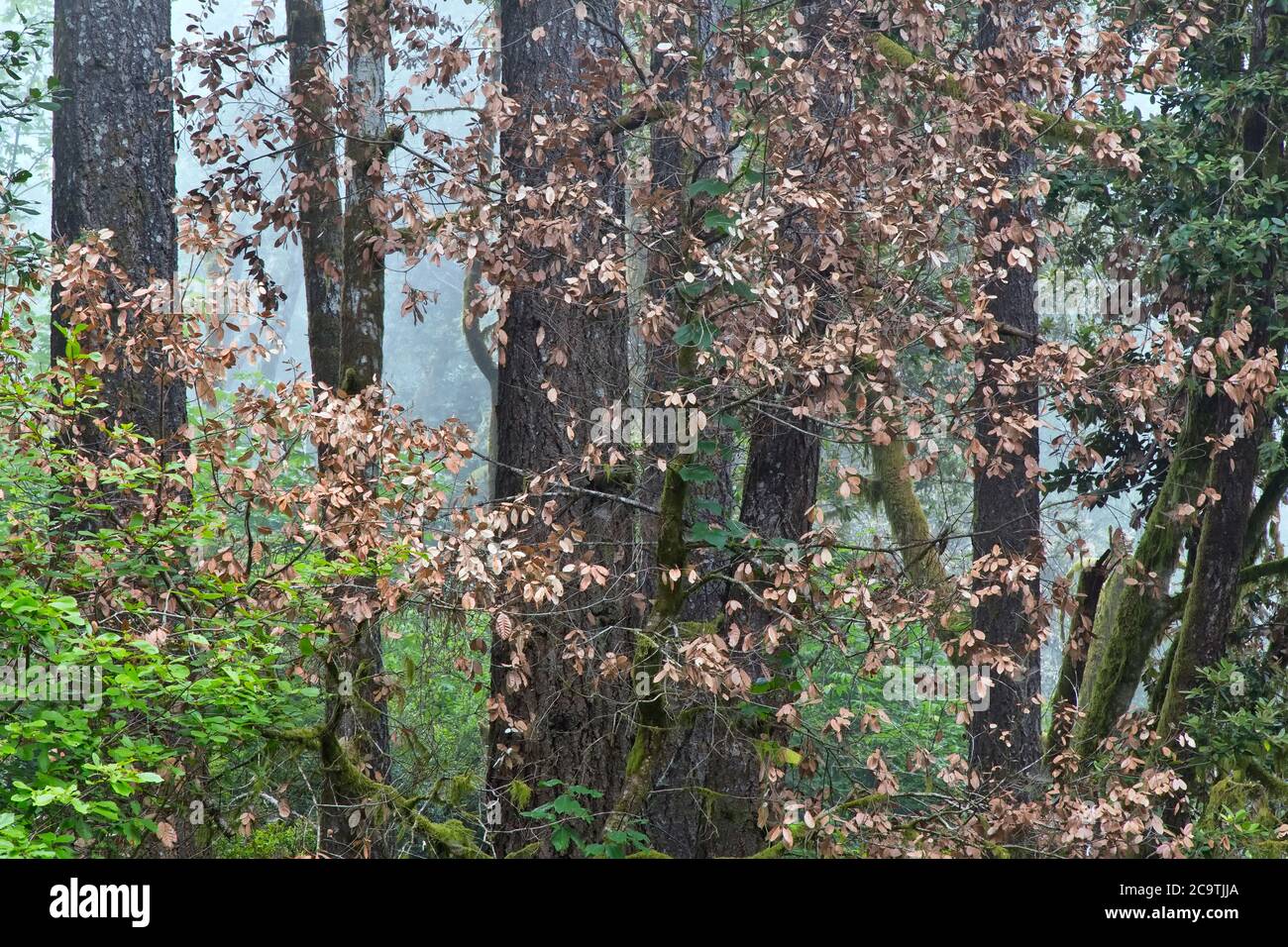 Sudden Oak Death (SOD) is a disease of Live & Tan Oak 'Quercus vislizenii' trees caused by an invasive plant pathogen 'Phytophthora ramorum'. Stock Photohttps://www.alamy.com/image-license-details/?v=1https://www.alamy.com/sudden-oak-death-sod-is-a-disease-of-live-tan-oak-quercus-vislizenii-trees-caused-by-an-invasive-plant-pathogen-phytophthora-ramorum-image367491106.html
Sudden Oak Death (SOD) is a disease of Live & Tan Oak 'Quercus vislizenii' trees caused by an invasive plant pathogen 'Phytophthora ramorum'. Stock Photohttps://www.alamy.com/image-license-details/?v=1https://www.alamy.com/sudden-oak-death-sod-is-a-disease-of-live-tan-oak-quercus-vislizenii-trees-caused-by-an-invasive-plant-pathogen-phytophthora-ramorum-image367491106.htmlRM2C9TJJA–Sudden Oak Death (SOD) is a disease of Live & Tan Oak 'Quercus vislizenii' trees caused by an invasive plant pathogen 'Phytophthora ramorum'.
 Antique Medical Illustration of Tumors of Bone circa 1881 Stock Photohttps://www.alamy.com/image-license-details/?v=1https://www.alamy.com/stock-photo-antique-medical-illustration-of-tumors-of-bone-circa-1881-37155951.html
Antique Medical Illustration of Tumors of Bone circa 1881 Stock Photohttps://www.alamy.com/image-license-details/?v=1https://www.alamy.com/stock-photo-antique-medical-illustration-of-tumors-of-bone-circa-1881-37155951.htmlRFC4CGP7–Antique Medical Illustration of Tumors of Bone circa 1881
 . The American journal of roentgenology, radium therapy and nuclear medicine . ex-tend to a distance of one or two centimetersaway from the tumor, as in Figure 23, whichis of the cortex located about one centimeterbeyond the limits of the tumor shown in Fig-ure 22. In round and spindle-celled sarcomasgiant cells are frequent along the zone of ab-sorption, and it is difficult to state whether ornot they are neoplastic in origin. New bone formation in the ossifying typesof sarcoma may be sufficiently extensive tooffset the reduction in density resulting frombone destruction, but its distribution Stock Photohttps://www.alamy.com/image-license-details/?v=1https://www.alamy.com/the-american-journal-of-roentgenology-radium-therapy-and-nuclear-medicine-ex-tend-to-a-distance-of-one-or-two-centimetersaway-from-the-tumor-as-in-figure-23-whichis-of-the-cortex-located-about-one-centimeterbeyond-the-limits-of-the-tumor-shown-in-fig-ure-22-in-round-and-spindle-celled-sarcomasgiant-cells-are-frequent-along-the-zone-of-ab-sorption-and-it-is-difficult-to-state-whether-ornot-they-are-neoplastic-in-origin-new-bone-formation-in-the-ossifying-typesof-sarcoma-may-be-sufficiently-extensive-tooffset-the-reduction-in-density-resulting-frombone-destruction-but-its-distribution-image376038345.html
. The American journal of roentgenology, radium therapy and nuclear medicine . ex-tend to a distance of one or two centimetersaway from the tumor, as in Figure 23, whichis of the cortex located about one centimeterbeyond the limits of the tumor shown in Fig-ure 22. In round and spindle-celled sarcomasgiant cells are frequent along the zone of ab-sorption, and it is difficult to state whether ornot they are neoplastic in origin. New bone formation in the ossifying typesof sarcoma may be sufficiently extensive tooffset the reduction in density resulting frombone destruction, but its distribution Stock Photohttps://www.alamy.com/image-license-details/?v=1https://www.alamy.com/the-american-journal-of-roentgenology-radium-therapy-and-nuclear-medicine-ex-tend-to-a-distance-of-one-or-two-centimetersaway-from-the-tumor-as-in-figure-23-whichis-of-the-cortex-located-about-one-centimeterbeyond-the-limits-of-the-tumor-shown-in-fig-ure-22-in-round-and-spindle-celled-sarcomasgiant-cells-are-frequent-along-the-zone-of-ab-sorption-and-it-is-difficult-to-state-whether-ornot-they-are-neoplastic-in-origin-new-bone-formation-in-the-ossifying-typesof-sarcoma-may-be-sufficiently-extensive-tooffset-the-reduction-in-density-resulting-frombone-destruction-but-its-distribution-image376038345.htmlRM2CRP0MW–. The American journal of roentgenology, radium therapy and nuclear medicine . ex-tend to a distance of one or two centimetersaway from the tumor, as in Figure 23, whichis of the cortex located about one centimeterbeyond the limits of the tumor shown in Fig-ure 22. In round and spindle-celled sarcomasgiant cells are frequent along the zone of ab-sorption, and it is difficult to state whether ornot they are neoplastic in origin. New bone formation in the ossifying typesof sarcoma may be sufficiently extensive tooffset the reduction in density resulting frombone destruction, but its distribution
 Antique Medical Illustration of Tumors of Bone circa 1881 Stock Photohttps://www.alamy.com/image-license-details/?v=1https://www.alamy.com/stock-photo-antique-medical-illustration-of-tumors-of-bone-circa-1881-37155752.html
Antique Medical Illustration of Tumors of Bone circa 1881 Stock Photohttps://www.alamy.com/image-license-details/?v=1https://www.alamy.com/stock-photo-antique-medical-illustration-of-tumors-of-bone-circa-1881-37155752.htmlRMC4CGF4–Antique Medical Illustration of Tumors of Bone circa 1881
 . Archives of physical medicine and rehabilitation . Meeting Root^ 550 COMMERCIAL EXHIBIT. 551 Modern Views of Cancer. Harry C. Saltzstein. M. D., J. Michigan M. Soc, 21 :429. October, 1922.IT IS TRUE that some tumors de-velop froin misplaced embryonalcells, but the vast majority develop ap-parently irrespective of misplacementsand their presence does not always in-dicate that neoplastic growth will fol-low, neither does their growth alwaysresult m tumor. Ribberts doctrine of cell autonomyholds that cells removed from activegrowth restraints will at once start ona riotous, autonomous new growt Stock Photohttps://www.alamy.com/image-license-details/?v=1https://www.alamy.com/archives-of-physical-medicine-and-rehabilitation-meeting-root-550-commercial-exhibit-551-modern-views-of-cancer-harry-c-saltzstein-m-d-j-michigan-m-soc-21-429-october-1922it-is-true-that-some-tumors-de-velop-froin-misplaced-embryonalcells-but-the-vast-majority-develop-ap-parently-irrespective-of-misplacementsand-their-presence-does-not-always-in-dicate-that-neoplastic-growth-will-fol-low-neither-does-their-growth-alwaysresult-m-tumor-ribberts-doctrine-of-cell-autonomyholds-that-cells-removed-from-activegrowth-restraints-will-at-once-start-ona-riotous-autonomous-new-growt-image376022033.html
. Archives of physical medicine and rehabilitation . Meeting Root^ 550 COMMERCIAL EXHIBIT. 551 Modern Views of Cancer. Harry C. Saltzstein. M. D., J. Michigan M. Soc, 21 :429. October, 1922.IT IS TRUE that some tumors de-velop froin misplaced embryonalcells, but the vast majority develop ap-parently irrespective of misplacementsand their presence does not always in-dicate that neoplastic growth will fol-low, neither does their growth alwaysresult m tumor. Ribberts doctrine of cell autonomyholds that cells removed from activegrowth restraints will at once start ona riotous, autonomous new growt Stock Photohttps://www.alamy.com/image-license-details/?v=1https://www.alamy.com/archives-of-physical-medicine-and-rehabilitation-meeting-root-550-commercial-exhibit-551-modern-views-of-cancer-harry-c-saltzstein-m-d-j-michigan-m-soc-21-429-october-1922it-is-true-that-some-tumors-de-velop-froin-misplaced-embryonalcells-but-the-vast-majority-develop-ap-parently-irrespective-of-misplacementsand-their-presence-does-not-always-in-dicate-that-neoplastic-growth-will-fol-low-neither-does-their-growth-alwaysresult-m-tumor-ribberts-doctrine-of-cell-autonomyholds-that-cells-removed-from-activegrowth-restraints-will-at-once-start-ona-riotous-autonomous-new-growt-image376022033.htmlRM2CRN7X9–. Archives of physical medicine and rehabilitation . Meeting Root^ 550 COMMERCIAL EXHIBIT. 551 Modern Views of Cancer. Harry C. Saltzstein. M. D., J. Michigan M. Soc, 21 :429. October, 1922.IT IS TRUE that some tumors de-velop froin misplaced embryonalcells, but the vast majority develop ap-parently irrespective of misplacementsand their presence does not always in-dicate that neoplastic growth will fol-low, neither does their growth alwaysresult m tumor. Ribberts doctrine of cell autonomyholds that cells removed from activegrowth restraints will at once start ona riotous, autonomous new growt
 Antique Medical Illustration of Tumors of Bone circa 1881 Stock Photohttps://www.alamy.com/image-license-details/?v=1https://www.alamy.com/stock-photo-antique-medical-illustration-of-tumors-of-bone-circa-1881-37155775.html
Antique Medical Illustration of Tumors of Bone circa 1881 Stock Photohttps://www.alamy.com/image-license-details/?v=1https://www.alamy.com/stock-photo-antique-medical-illustration-of-tumors-of-bone-circa-1881-37155775.htmlRFC4CGFY–Antique Medical Illustration of Tumors of Bone circa 1881
 . The clonal selection theory of acquired immunity. Immunity; Cells. NEOPLASTIC DISEASE proportion of a population, it is possible to state in general terms what determines the age at which cancer appears. The two significant factors are {a) the frequency with which each of the consecutive mutations needed occurs, and (b) the selective advantage, in the sense of the proportionate in- crease in numbers of the clone concerned, that is provided by each mutation. In individual cases we can be certain that two important additional factors need to be considered, (c) the likeHhood that individual gen Stock Photohttps://www.alamy.com/image-license-details/?v=1https://www.alamy.com/the-clonal-selection-theory-of-acquired-immunity-immunity-cells-neoplastic-disease-proportion-of-a-population-it-is-possible-to-state-in-general-terms-what-determines-the-age-at-which-cancer-appears-the-two-significant-factors-are-a-the-frequency-with-which-each-of-the-consecutive-mutations-needed-occurs-and-b-the-selective-advantage-in-the-sense-of-the-proportionate-in-crease-in-numbers-of-the-clone-concerned-that-is-provided-by-each-mutation-in-individual-cases-we-can-be-certain-that-two-important-additional-factors-need-to-be-considered-c-the-likehhood-that-individual-gen-image232762211.html
. The clonal selection theory of acquired immunity. Immunity; Cells. NEOPLASTIC DISEASE proportion of a population, it is possible to state in general terms what determines the age at which cancer appears. The two significant factors are {a) the frequency with which each of the consecutive mutations needed occurs, and (b) the selective advantage, in the sense of the proportionate in- crease in numbers of the clone concerned, that is provided by each mutation. In individual cases we can be certain that two important additional factors need to be considered, (c) the likeHhood that individual gen Stock Photohttps://www.alamy.com/image-license-details/?v=1https://www.alamy.com/the-clonal-selection-theory-of-acquired-immunity-immunity-cells-neoplastic-disease-proportion-of-a-population-it-is-possible-to-state-in-general-terms-what-determines-the-age-at-which-cancer-appears-the-two-significant-factors-are-a-the-frequency-with-which-each-of-the-consecutive-mutations-needed-occurs-and-b-the-selective-advantage-in-the-sense-of-the-proportionate-in-crease-in-numbers-of-the-clone-concerned-that-is-provided-by-each-mutation-in-individual-cases-we-can-be-certain-that-two-important-additional-factors-need-to-be-considered-c-the-likehhood-that-individual-gen-image232762211.htmlRMREK6G3–. The clonal selection theory of acquired immunity. Immunity; Cells. NEOPLASTIC DISEASE proportion of a population, it is possible to state in general terms what determines the age at which cancer appears. The two significant factors are {a) the frequency with which each of the consecutive mutations needed occurs, and (b) the selective advantage, in the sense of the proportionate in- crease in numbers of the clone concerned, that is provided by each mutation. In individual cases we can be certain that two important additional factors need to be considered, (c) the likeHhood that individual gen
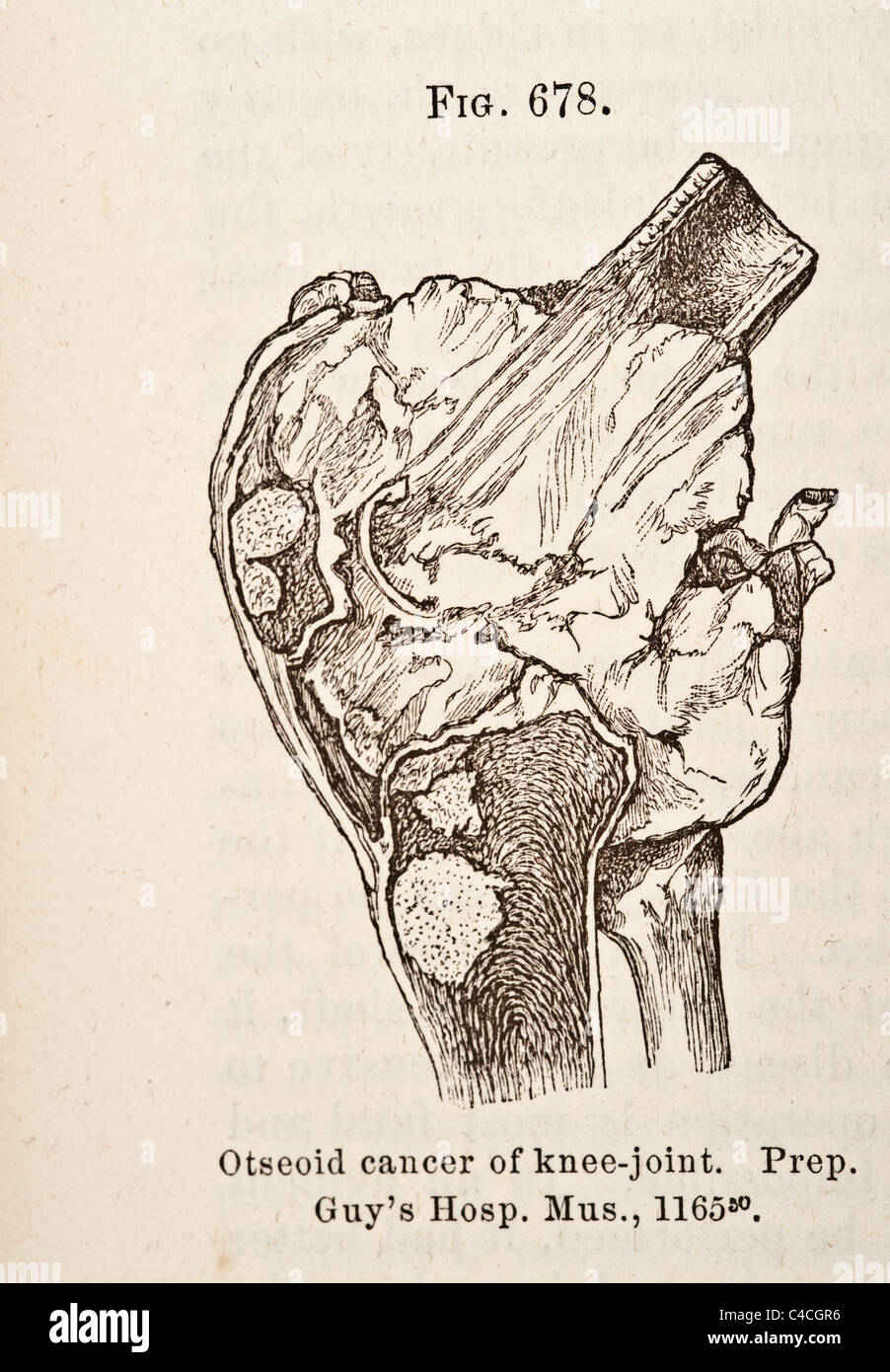 Antique Medical Illustration of Tumors of Bone circa 1881 Stock Photohttps://www.alamy.com/image-license-details/?v=1https://www.alamy.com/stock-photo-antique-medical-illustration-of-tumors-of-bone-circa-1881-37155978.html
Antique Medical Illustration of Tumors of Bone circa 1881 Stock Photohttps://www.alamy.com/image-license-details/?v=1https://www.alamy.com/stock-photo-antique-medical-illustration-of-tumors-of-bone-circa-1881-37155978.htmlRMC4CGR6–Antique Medical Illustration of Tumors of Bone circa 1881
 . The clonal selection theory of acquired immunity. Immunity; Cells. NEOPLASTIC DISEASE The most striking deviation from the regularity of the relationship is with prostatic cancer. Instead of a straight line with a slope approximately 6, this is close to a straight line with a slope between 12 and 13, lying, of course, in the old-age period only. This is undoubtedly related to hormonal factors and is discussed later.. 60 70 80 Fig. 11. Similar graph to show different slope of the log-log relationship for all cancers (male) and for prostatic carcinoma C and hypertrophy H. To bring both on the Stock Photohttps://www.alamy.com/image-license-details/?v=1https://www.alamy.com/the-clonal-selection-theory-of-acquired-immunity-immunity-cells-neoplastic-disease-the-most-striking-deviation-from-the-regularity-of-the-relationship-is-with-prostatic-cancer-instead-of-a-straight-line-with-a-slope-approximately-6-this-is-close-to-a-straight-line-with-a-slope-between-12-and-13-lying-of-course-in-the-old-age-period-only-this-is-undoubtedly-related-to-hormonal-factors-and-is-discussed-later-60-70-80-fig-11-similar-graph-to-show-different-slope-of-the-log-log-relationship-for-all-cancers-male-and-for-prostatic-carcinoma-c-and-hypertrophy-h-to-bring-both-on-the-image232762218.html
. The clonal selection theory of acquired immunity. Immunity; Cells. NEOPLASTIC DISEASE The most striking deviation from the regularity of the relationship is with prostatic cancer. Instead of a straight line with a slope approximately 6, this is close to a straight line with a slope between 12 and 13, lying, of course, in the old-age period only. This is undoubtedly related to hormonal factors and is discussed later.. 60 70 80 Fig. 11. Similar graph to show different slope of the log-log relationship for all cancers (male) and for prostatic carcinoma C and hypertrophy H. To bring both on the Stock Photohttps://www.alamy.com/image-license-details/?v=1https://www.alamy.com/the-clonal-selection-theory-of-acquired-immunity-immunity-cells-neoplastic-disease-the-most-striking-deviation-from-the-regularity-of-the-relationship-is-with-prostatic-cancer-instead-of-a-straight-line-with-a-slope-approximately-6-this-is-close-to-a-straight-line-with-a-slope-between-12-and-13-lying-of-course-in-the-old-age-period-only-this-is-undoubtedly-related-to-hormonal-factors-and-is-discussed-later-60-70-80-fig-11-similar-graph-to-show-different-slope-of-the-log-log-relationship-for-all-cancers-male-and-for-prostatic-carcinoma-c-and-hypertrophy-h-to-bring-both-on-the-image232762218.htmlRMREK6GA–. The clonal selection theory of acquired immunity. Immunity; Cells. NEOPLASTIC DISEASE The most striking deviation from the regularity of the relationship is with prostatic cancer. Instead of a straight line with a slope approximately 6, this is close to a straight line with a slope between 12 and 13, lying, of course, in the old-age period only. This is undoubtedly related to hormonal factors and is discussed later.. 60 70 80 Fig. 11. Similar graph to show different slope of the log-log relationship for all cancers (male) and for prostatic carcinoma C and hypertrophy H. To bring both on the

